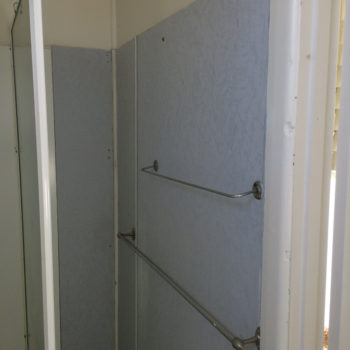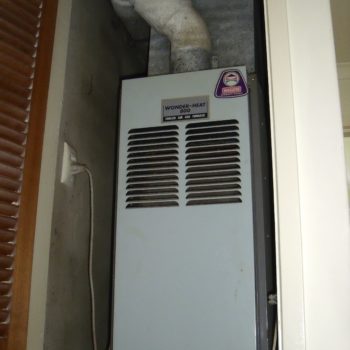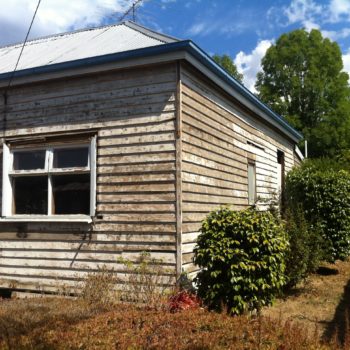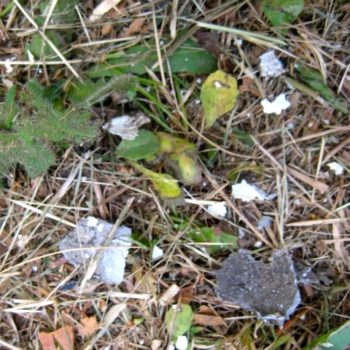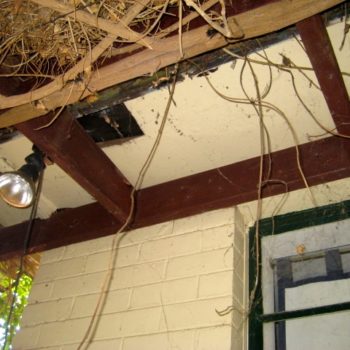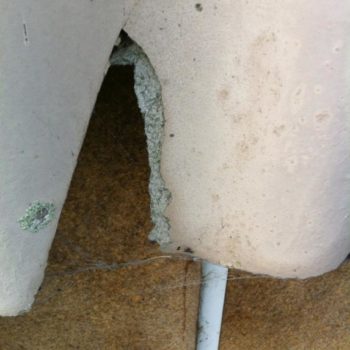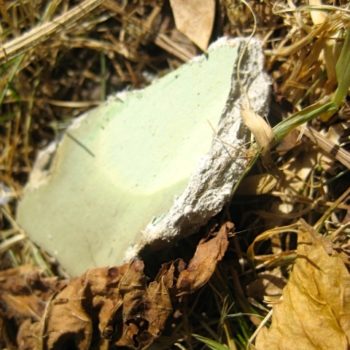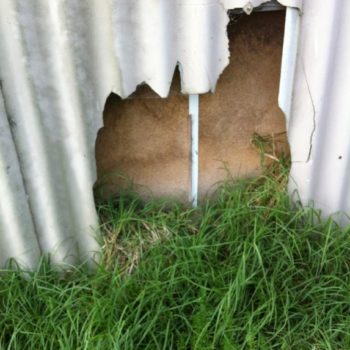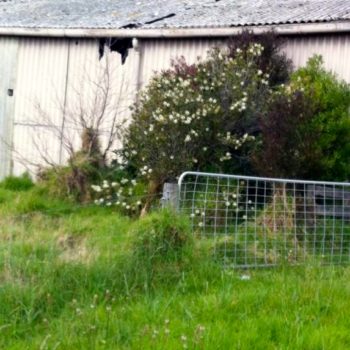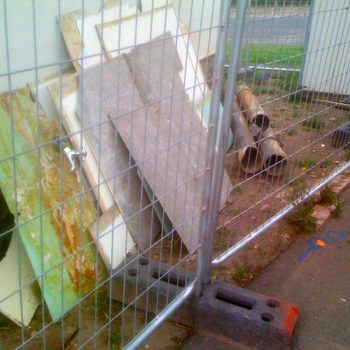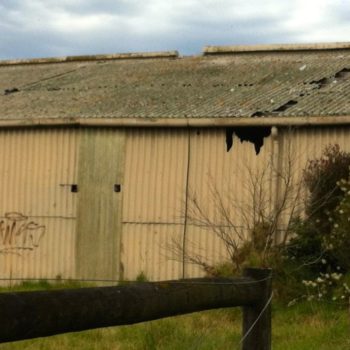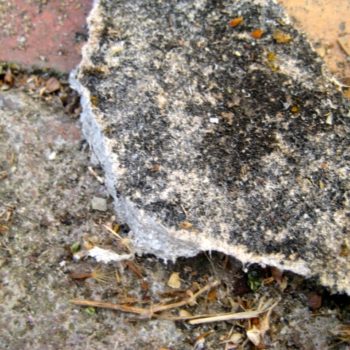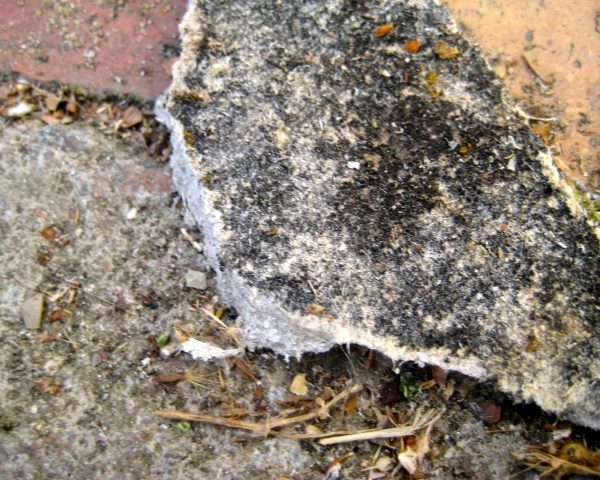Question 1: I think I may have been exposed to asbestos, what can I do?
Answer: If you are exposed to asbestos fibres, there is no magic wand, once breathed in any potential damage is done. It is important to note only a very small proportion of people exposed to asbestos fibre will contract an asbestos related disease. The only way to ensure you will not contract an asbestos related disease is not to get exposed to asbestos fibres.
Question 2: What does asbestos look like, how can I tell if something contains asbestos?
Answer: Asbestos in its raw form can look like wool, fiberglass fibres or many other products. The average person will never see or come across actual asbestos in its raw form – Canberra and surrounding NSW areas are the only known areas generally recognized areas in Australia where asbestos in its raw form was used as ceiling insulation. Asbestos is normally found in bonded building materials and products, and also in friable asbestos products such as insulation lagging – there are over 3000 known asbestos containing products. The only definitive way of determining if something contains asbestos is by sampling and laboratory testing, nobody can ascertain whether something contains asbestos, or not, by purely visual inspection. To be certain, a sample of the suspect material needs to be taken (preferably by a qualified person) and tested at a licensed testing laboratory.
Question 3: Is it safe to live in, or buy a house containing asbestos?
Answer: It depends on what types of asbestos containing materials and products are in the house and whether or not they are in good condition. Does any asbestos cement sheet have holes in it, or is it broken? Is it painted and sealed? Is there any deterioration in bonded material and products that will allow asbestos fibres to escape and contaminate the environment? Does any floor linoleum or tiles contain asbestos? Is there any pipework that has friable asbestos insulation lagging wrapped around it? Are there any ceilings that are made out of asbestos insulation or sound proofing tiles, or asbestos insulation board? Are there interior or exterior walls lined with asbestos insulation board? These are just some of the questions you should be able to answer if you live in, or looking at buying a house built before 1990. Living in a house built with asbestos containing building materials, or one that contains asbestos containing products is about risk management. To be able to manage the risk you must first know it exists, this is why it is essential to engage a licensed asbestos assessor to assess and take samples of suspect material, to determine where asbestos is in your home, or a house or property you are considering buying
Question 4: Where can I find a list of licensed asbestos removalists?
Answer: Each Australian state and territory government have online lists of accredited persons and companies licensed to sample and test suspected containing material, and to remove asbestos. The Bernie Banton Foundation has compiled a list of all relevant state and territory contact phone numbers, and how to access them online, see the information page entitled: Australian Governments Lists of Licensed Asbestos Assessors – Removalists – Disposal Sites
Question 5: We own a brick veneer and weatherboard clad home built before 1990, where are we likely to find asbestos?
Answer: The fact the home is brick veneer and weatherboard clad construction means it is only the brick and timber exterior cladding that distinguishes it from any other home built before 1990, that is clad in asbestos cement sheet (fibro). All the normal places apply where asbestos may be found in any pre 1990 built home. The exterior may have asbestos cement sheet (ACS) eaves, verandah, carport ceiling and garage lining, as well as gable and above window in fills. It could also have asbestos containing electrical switchboards and cabinets, roofing, gutters, ridging, downpipes, storm water, toilet ‘stink’ and sewage pipes; chimney flues and outbuildings cladded with ACS – this list is only the most obvious areas, there are many more places it may be found. Inside asbestos may be found in virtually every room, particularly in the kitchen, laundry, bathrooms and toilet areas, under and contained in flooring, behind and in wall tiles, flashbacks, shower surrounds, even the humble toilet system. There are many ‘hidden’ areas inside a home where you will not readily be able to see asbestos containing materials and products, such as backing behind wall tiles and under flooring. As the home is built prior to 1990 we recommend it be assessed and tested for asbestos by a licensed asbestos assessor.
Question 6: My house was built in the 1800s, would it be safe for me to assume it doesn’t have asbestos in it?
Answer: No, you should automatically assume any house built before 1990 does contain asbestos of some kind in it, unless proven otherwise. Even though a house built in the period before asbestos containing material was used in Australia, may not have asbestos in its original structure, very few homes built in this period would not have had
renovations done, particularly in the wet areas, such as kitchens, bathrooms, laundries and toilets, where asbestos cement sheet was commonly used. Also, it was most likely redecorated, in which case textured paints, floor coverings, light fittings, and a myriad of things may have been used which may have contained asbestos in some form. The only way to know is to have your house assessed by a qualified asbestos assessor who will take samples and have them tested.
Question 7: Does the Government give any assistance to cover the cost of assessing, sampling and testing for, or removing asbestos?
Answer: In general terms the answer is no, various state and territory governments, and local councils have particular purpose schemes and trials in place, but they do not pertain to everyday circumstances and situations. The best bet would be to consult your local council, city or shire to see whether they have any schemes in place hat may assist you with assessing, removal and/or disposal.
Question 8: Is it legal for me to DIY removal of asbestos containing material?
Answer: All states and territories have differing legislation (you should confirm whether you can legally DIY asbestos with your local state or territory government), but in most it is legal for a homeowner to remove up to 10 square metres of bonded asbestos containing material per job, or project. However, you can only legally do this if you are fully trained and do it according to all relevant regulations and guidelines, using the right equipment. It is important to realise, in many cases your
everyday insurances may not cover you if anything goes wrong!
In the Australian Capital Territory, only fully licensed, qualified and insured persons may remove asbestos, or asbestos containing material of any kind.
Note: In all Australian states and territories it is illegal for an unqualified, non-licensed person to work with, or to remove friable asbestos products.
Question 9: Is it legal for me to take asbestos containing material to the tip?
Answer: In most areas it is legal for a homeowner to dispose of non-commercial quantities of bonded asbestos containing material – this varies from state to state and from council to council, you should consult with your local council to establish what is legal in your area. If it is legal to do so, you must meet all applicable rules and regulations, which generally will involve double wrapping the material in thick plastic sheeting, fully sealing it and labeling it as containing asbestos. You can only dispose of asbestos at a licensed asbestos disposal facility.
Handling asbestos containing material is extremely dangerous, you should only contemplate doing so if you have been fully trained, and have the right equipment.
Note: Your homeowner public liability insurance and motor vehicle policy may not cover you if you are handling or transporting asbestos. The Bernie Banton Foundation recommends you do not DIY asbestos!
Question 10: I live on a large property, is it okay to bury asbestos containing material in a deep hole?
Answer: No, it is totally illegal, all forms of asbestos, and asbestos containing material may only be disposed of at licensed disposal facilities.
Question 11: Is there a list of Australian asbestos disposal facilities?
Answer: Yes, the Australian Government’s Asbestos Safety and Eradication Agency website has a full list of Australian disposal facilities. You can find it online by going to: https://www.asbestossafety.gov.au/removal-and-disposal/search-disposal-facilities or contact the Agency direct: Phone 1300 363 079 or Email: enquiries@asbestossafety.gov.au
Question 12: I want to start renovating my house, is it worth me doing some training?
Answer: Yes, asbestos awareness training will aid you to be able to identify where asbestos may be in your home or workplace, thus helping you make the decision to engage a licensed asbestos assessor to assess and test for asbestos. The HIA and other bodies run short (generally about 4 hours) asbestos awareness training courses – doing one of these courses will not qualify you to handle asbestos, but should make you more aware of the danger, and where it may lie, hopefully lessening the risk of you and others being exposed to asbestos fibres.
Question 13: I have broken some fibro cladding, is it safe to use a vacuum cleaner to clean up asbestos dust and debris?
Answer: Definitely Not! The worst thing you can do is use a vacuum cleaner to clean up known or suspected asbestos containing dust. The filters in everyday vacuum cleaners are not fine enough to catch asbestos fibres, even vacuum cleaners fitted with low allergenic dust filters will not collect asbestos fibres, instead they blow the fibres out the other end and dissipate them around the surrounding area. Asbestos professionals use purpose built, dedicated vacuum cleaners, that are only used for cleaning up where asbestos may be an issue. For information on how to clean up after an ‘asbestos accident’ see the Asbestos Emergency Procedures information leaflet or go to the Asbestos Awareness tab of the Bernie Banton Foundation website.
Question 14: I have created asbestos dust after using a power grinder to get up glued down flooring – what should I do?
Answer: As this will be high contamination, do not attempt to clean this up yourself! Shut all doors and windows to the room(s) or areas that the dust may have got to – this will help limit the contamination, then immediately call a ‘licensed’ asbestos hygienist (see Q 4 on page 1, also see Q 13 above), to come and decontaminate the house and all belongings. Note: This may mean you have to dispose of some soft goods, such as couches; clothes; carpets etc. – every situation is different, the hygienist you call should be able to advise you of the best immediate action for you to take. The important thing is to contain the contamination and limit the exposure.
Question 15: Is there an asbestos exposure register?
Answer: Yes, the Australian Government’s Asbestos Safety and Eradication Agency maintains a National Asbestos Exposure Register, you can register online by going to: https://asbestossafety.gov.au/national-exposure-register or contact the Agency direct: Phone 1300 363 079 or Email: enquiries@asbestossafety.gov.au
Question 16: I want to fit new towel rails in my bathroom, but I suspect there may be asbestos cement sheet behind the tiles – what should I do?
Answer: If you are not certain what is behind the tiles, and your house was built prior to 1990, assume it is asbestos containing material and investigate alternatives to drilling holes and screwing rails on. Perhaps you can use suction towel rails instead. Not ideal, but better than risking your life!
Important: Never drill into any area where you know, or suspect there is asbestos – you need to be fully trained to do any work where asbestos may be present!
Question 17: Is it all right to use a pressure cleaner to wash down asbestos cement corrugated roofing and cladding material?
Answer: Powered equipment of any kind should not be used on any asbestos containing material such as asbestos cement corrugated roofing and walls. As these materials are made by using cement to bond asbestos fibres together, water blasting will wash away the cement and allow the asbestos fibres to escape, this is extremely dangerous – to do so is illegal, and you will possibly leave yourself open to prosecution, possible gaol or heavy fines, and even being forced to pay clean up compensation.
Question 18: Am I allowed to re-use asbestos containing material to repair existing fitted damaged material?
Answer: No, it is illegal to use or re-use asbestos containing material or product for any purpose. The use of, and importation of, all forms of asbestos, asbestos containing material or product has been banned in Australia since the end of 2003. The only form of work allowed, that interferes in anyway structurally with any kind of asbestos containing material or product, is removal.
Question 19: I want to repaint fitted asbestos cement sheet eaves and cladding, how do I prepare it?
Answer: Always take care when working on or around known or perceived asbestos containing material or product, wear and fit personal protective equipment as described in the information page Asbestos Emergency Procedures, as a precaution to help limit any risk. You must never use any thing that is abrasive on any type of bonded cement products, do not sand it, grind it or score it in any way, do not wash it with a pressure washer, or with a stiff brush or broom of any kind. If existing paint is peeling or flaking off, gently remove it using a soft nylon kitchen type spatula (if the paint is stuck on, do not try to remove it), then wash it down with soapy water using a sponge, rinse off with a gentle fine mist of water, allow to air dry before painting. Note: If it is damaged, do not touch it, have a person who is fully licensed to handle asbestos, remove and replace it
with a non asbestos-containing alternative.
Question 20: I know my eaves are asbestos containing cement sheet, how can I safely replace them?
Answer: You need to engage a fully qualified and licensed professional asbestos removalist to do this, as the task will more than likely be greater than 10 square metres, it will be illegal to do it yourself in all Australian states and territories.



